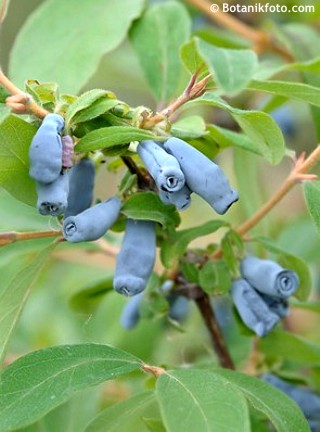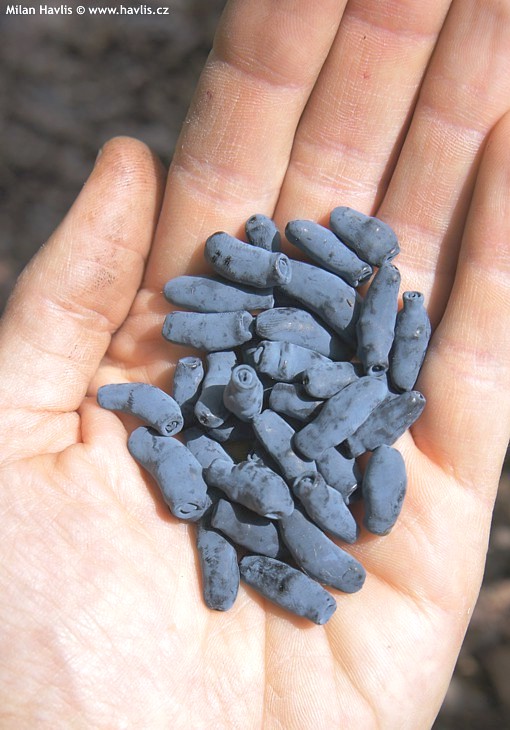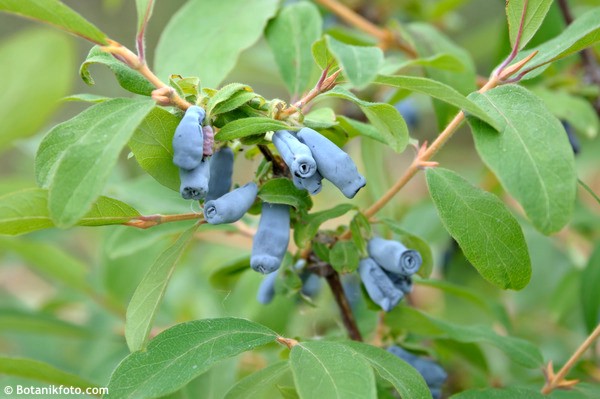Lonicera caerulea var.kamtschatica honeyberry, edible honeysuckle


Honeyberry is an edible version of honeysuckle with fruit of similar taste and appearance of blueberry. The fruit is sweet or sweet-and-sour, 25-35 mm long, oval, deep blue. The fruit ripens very early, often already in May, about two weeks before the first strawberries.
Trávníček is a Czech selection with large and sweet fruit.
Honeyberry is easy to grow. It does not require any special soil unlike blueberries. All they need is full sun and plenty of water and fertilizer. Follow regular watering and fertilizing schedule from early spring until fruit maturity. Then the plant often drops majority of leaves. If you continue watering and fertilizing it lightly it will keep the leaves and will look tidy. The most fruiting branches are 1-2 years old long shoots. The longer the better. Older branches are best removed to keep it juvenile. Fully hardy to -40°C (USDA zone 3).
Last update 01-03-2016; 13-01-2017
Goods are shipped all over Europe. For Russia and U.K. and for further details please read about SHIPPING OPTIONS HERE.
Are you interested in a serious discount for orders NOV-FEB? Check your options here.
THE PRICES INCLUDE VAT of 15%. For quick conversion you can use 1 CZK = approx. 0.04 EUR
- STANDARD QUALITY - Plants of this group are 1st class quality with number of branches and overall density adequate to their size and age, considering they were container grown.
- DE LUXE QUALITY - This label guarantees a luxurious quality of manually selected plants that, compared to their height and age, are exceptionally dense and beautiful.
- EXTRA - These plants are usually mature and bigger specimens with exceptional overall appearance.
- STANDARD (as described in the plant form) means a tree with a trunk of 190-210 cm and a crown at the top, unless specified differently. The commercial size for trees is their girth measured in the height of 1m from ground.
- HOBBY - These plants are of the same quality as our standard-quality plants but younger and therefore cheaper.
- SHRUB - a woody plant with branches growing bushy from the ground level.
- HALF-STANDARD or MINI-STANDARD - a small tree with shorter trunk, its size is usually specified.
- FEATHERED - These are trees with branches growing already from the base of the trunk and up along the stem.
- GRASSES and PERENNIALS - Sizes given usually read the diameter of the pot or the clump, as specified.





































